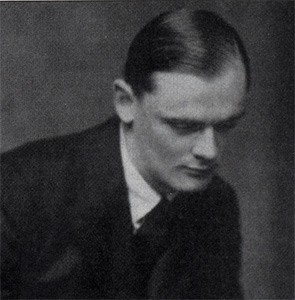Related Research Articles

The Compact Disc-Interactive is a digital optical disc data storage format that was mostly developed and marketed by Dutch company Philips. It was created as an extension of CDDA and CD-ROM and specified in the Green Book, co-developed by Philips and Sony, to combine audio, text and graphics. The two companies initially expected to impact the education/training, point of sale, and home entertainment industries, but CD-i eventually became best known for its video games.

In the computer industry, vaporware is a product, typically computer hardware or software, that is announced to the general public but is late or never actually manufactured nor officially cancelled. Use of the word has broadened to include products such as automobiles.

FHM is a British multinational men's lifestyle magazine that was published in several countries. Its master edition contained features such as the FHM 100 Sexiest Women in the World, which has featured models, actresses, musicians, TV presenters, and reality stars.
Douglas Arthur Hill was a Canadian science fiction author, editor and reviewer. He was born in Brandon, Manitoba, the son of a railroad engineer, and was raised in Prince Albert, Saskatchewan. An avid science fiction reader from an early age, he studied English at the University of Saskatchewan and at the University of Toronto. He married fellow writer and U. of S. alumna Gail Robinson in 1958; they moved to Britain in 1959, where he worked as a freelance writer and editor for Aldus Books. In 1967–1968 he served as assistant editor of the controversial New Worlds science fiction magazine under Michael Moorcock.

John Terence Reese was a British bridge player and writer, regarded as one of the finest of all time in both fields. He was born in Epsom, Surrey, England to middle-class parents, and was educated at Bradfield College and New College, Oxford, where he studied classics and attained a double first, graduating in 1935.
The Bridge World (TBW), the oldest continuously published magazine about contract bridge, was founded in 1929 by Ely Culbertson. It has since been regarded as the game's principal journal, publicizing technical advances in bidding and the play of the cards, discussions of ethical issues, bridge politics and leading personalities, and reports of major tournaments.
Edgar Kaplan was an American bridge player and one of the principal contributors to the game. His career spanned six decades and covered every aspect of bridge. He was a teacher, author, editor, administrator, champion player, theorist, expert Vugraph commentator, coach/captain and authority on the laws of the game. He was the editor and publisher of The Bridge World magazine for more than 30 years (1967–1997). With Alfred Sheinwold he developed the Kaplan–Sheinwold bidding system. He was from New York City.

The Official Encyclopedia of Bridge (OEB) presents comprehensive information on the card game contract bridge with limited information on related games and on playing cards. It is "official" in reference to the American Contract Bridge League (ACBL) which authorized its production and whose staff prepared and/or supervised its various editions.
Ron Klinger is an Australian contract bridge player and a leading English-language bridge writer, the author of more than 70 books on the game. He is an Australian Grand Master and a World Bridge Federation International Master.
A reverse, in the card game contract bridge, is a bidding sequence designed to show additional strength without the need to make a jump bid; specifically two suits are bid in the reverse order to that expected by the basic bidding system. Precise methods and definitions vary with country, bidding system and partnership agreements.
Norman Kay was an American bridge player. He partnered Sidney Silodor until Silodor's death in 1963. With Edgar Kaplan, Kay formed one of the most successful and longest-lasting partnerships in organized bridge. It spanned more than 40 years, and ended with Kaplan's death in 1997. He was from Narberth, Pennsylvania.
James M. Ward is an American game designer and fantasy author who worked for TSR, Inc. for more than 20 years.

The ACM Web Conference is a yearly international academic conference on the topic of the future direction of the World Wide Web. The first conference of many was held and organized by Robert Cailliau in 1994 at CERN in Geneva, Switzerland. The conference has been organized by the International World Wide Web Conference Committee (IW3C2), also founded by Robert Cailliau and colleague Joseph Hardin, every year since. In 2020, the Web Conference series became affiliated with the Association for Computing Machinery (ACM), where it is supported by ACM SIGWEB. The conference's location rotates among North America, Europe, and Asia and its events usually span a period of five days. The conference aims to provide a forum in which "key influencers, decision makers, technologists, businesses and standards bodies" can both present their ongoing work, research, and opinions as well as receive feedback from some of the most knowledgeable people in the field.
Hugh Walter Kelsey was a British bridge player and writer, best known for advanced books on the play of the cards.

The Baltimore City College football team, known as the "Black Knights" or the "Knights" since 1950, or longtime since the 1880s as the "Collegians" or since 1928 as the "Alamedans", represents the Baltimore City College, a public college preparatory secondary school featuring the International Baccalaureate programme, in Baltimore, Maryland, U.S. Since the introduction of football at the school in the mid-1870s, the City College football team has competed in more than 1,000 contests, won more than 20 Maryland Scholastic Association (MSA) and Baltimore City championships, while emphasizing academics and character education.
Maurice Harrison-Gray, known always as 'Gray', was an English professional contract bridge player. For about thirty years from the mid-thirties to the mid-sixties he was one of the top players. As a member of the Great Britain national team he won the European Bridge League championships in 1948, 1949, 1950 and 1963. He was from London.
The Little Major is a bridge bidding system devised primarily by Terence Reese.

Front Page Sports Football Pro is a DOS video game developed and published by Dynamix and released in 1993, and is part of the Front Page Sports Football video game series.
References
- ↑ The Editors (April 1967). "The Bridge World Standard". The Bridge World. 38 (7): 4–7.
{{cite journal}}:|last=has generic name (help) through to The Editors (August 1969). "The Bridge World Standard, XIX". The Bridge World. 40 (11): 33–35.{{cite journal}}:|last=has generic name (help) - ↑ The Editors (April 1984). "The Bridge World Standard". The Bridge World. 55 (7): 19.
{{cite journal}}:|last=has generic name (help) - ↑ The Editors, The Bridge World Magazine. The Pocket Guide to Bridge World Standard (2001 ed.). New York, NY: The Bridge World Books. p. 6. ISBN 978-0-9753419-2-6.
{{cite book}}:|last=has generic name (help) - 1 2 The Editors (November 1993). "The Bridge World Standard—1994, V". The Bridge World. 65 (2): 19–26.
{{cite journal}}:|last=has generic name (help) - 1 2 The Editors (December 1993). "The Bridge World Standard—1994, VI". The Bridge World. 65 (3): 17–26.
{{cite journal}}:|last=has generic name (help) - ↑ "Bridge World Standard 2001". The Bridge World. Retrieved 28 November 2016.
- ↑ "Bridge World Standard 2017". The Bridge World. Retrieved 28 November 2016.